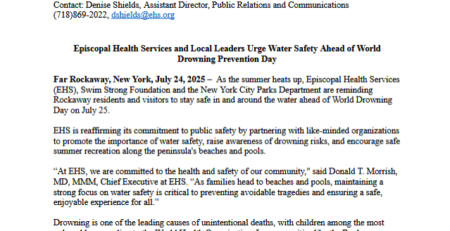Be SMART to be SAFE Around the Water
As Water Safety Professionals We Advocate That You Only Swim When A Life Guard is Present BUT If You Insist Upon Putting Yourself in Danger, Here Are Some Ways to Minimize Your Risk of Drowning and Injury.
- Can’t swim? Don’t go out! Know your limits and stay within them.
- Assume that your swim skills are less than you think in open water.
- Swim with a buddy; preferably one that is more swim skilled than you are.
- Ask a person who is on shore to watch you and call 911 if you appear to need help.
- Water temperature, whether cold or hot, will tire you quickly. Use your treading and back floating skills to regain strength. Get out when you feel less than 100%
- Stay AWAY from groins, rock jetties, and piers. They are not places of safety. Instead, they often cause a suction around them which can result in severe bodily injury.
- Sandbars are not permanent structures. They collapse. Stay off them.
- Stay out of ALL currents. Lateral currents lead to rip currents, both will sweep you away.
- When caught in current, Flip, Float, and Follow out (go with the current it does not pull you down). Don’t fight it, you will exhaust yourself which leads to a high probability of drowning.
- There is little visibility so walk in feet first to protect from head, brain, or spinal cord injury from diving into submerged rocks, sandbars, and debris.
- Beware of sudden drop offs.
- Changes in weather can cause waters to become rougher. Even storms 1,500 miles away, affect the currents on our local beaches.
- Be sure not to swim where any runoff or sewerage enters the water. You are likely to be infected by Ecoli and other bacteria.
- Get out of the water immediately and seek shelter when you hear thunder or see lightning. Lightning travels through water and can kill you.
- Seek medical attention if stung or bitten by marine life.
As you can see there is A LOT to be concerned about when you swim in open water. Ninety-five percent of drowning and water-based accidents ARE preventable. Swimming where and when a lifeguard is present is one way to ensure you have a fun and safe experience.
To learn more, please watch this video:
These tips are presented by Janet Fash, Seasonal Chief Life Guard and Shawn Slevin, E.D. Swim Strong Foundation, Inc.





